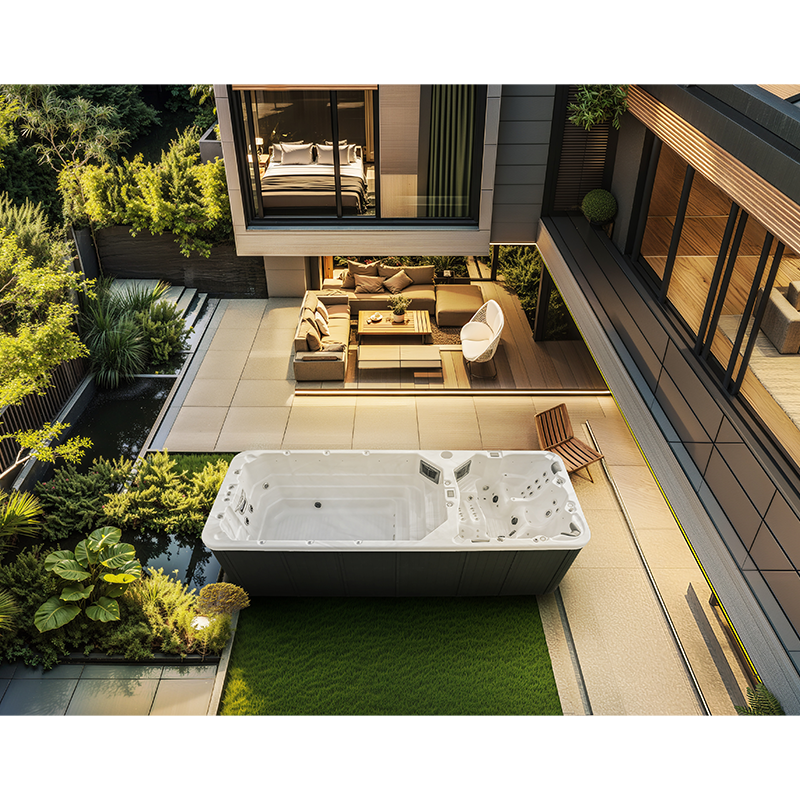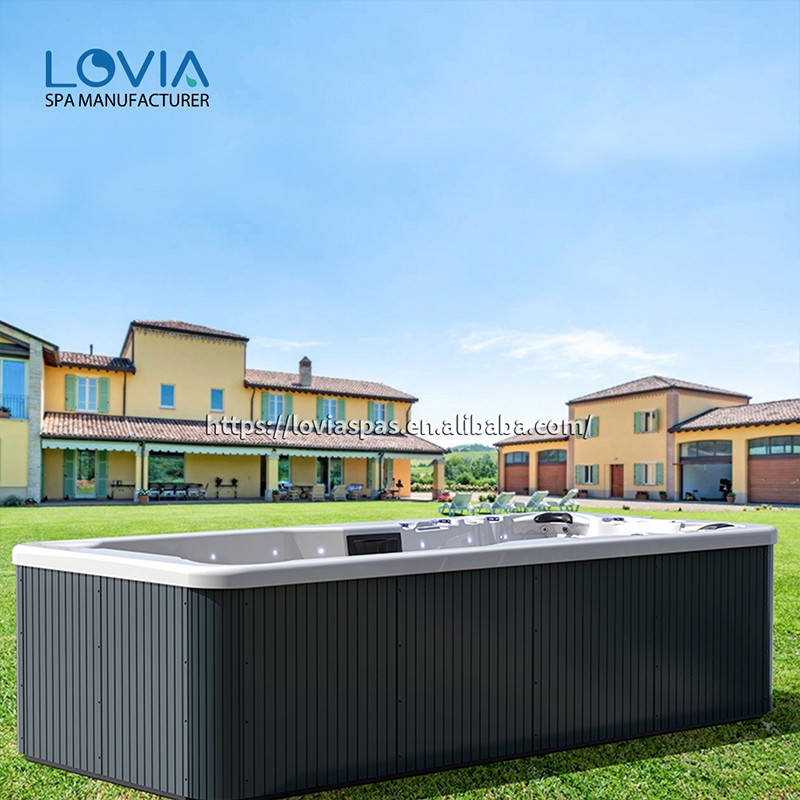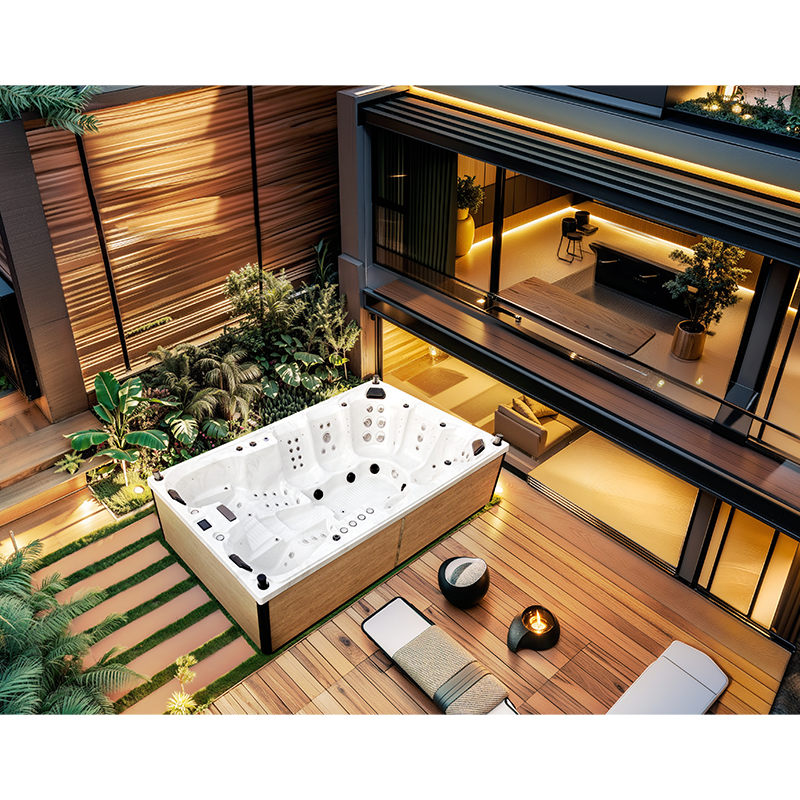
What is the cheapest way to chlorine a swim spa?
2024-09-19 15:30Swim Spa is a popular choice for modern families and fitness centers, and its water quality management is particularly important. As a commonly used disinfectant, chlorine can effectively keep water bodies clean, but the cost of long-term use of chlorine may become a burden for users.
This article will discuss the cheapest way to add chlorine to a swimming spa to help users reduce usage costs while ensuring water quality safety.

What does adding chlorine do?
The main function of chlorine in a swim spa is to sterilize and prevent algae growth. Specific functions include:
1. Sterilization: Effectively eliminate bacteria, viruses and other microorganisms in water to ensure hygienic water quality.
2. Anti-algae: Prevent algae reproduction and keep the water clear.
3. Oxidize organic matter: Decompose organic pollutants such as human excrement and cosmetic residues to prevent water odor.
What are the problems with using chlorine?
Although chlorine is effective in water quality management, there are also some problems with its use:
1. Higher Cost: The ongoing cost of chlorine is higher, especially in large swim spas.
2. Irritation: The smell of chlorine is pungent, and high concentrations can irritate the skin, eyes and respiratory tract.
3. By-products: The reaction between chlorine and organic matter in water will produce by-products such as trihalomethanes, which may be harmful to health.

What is the cheapest way to chlorine a swim spa?
● Choose the right chlorine product
There are a variety of chlorine products available on the market, including liquid chlorine, granular chlorine, and chlorine tablets. Each product has slightly different prices and results:
1. Liquid chlorine: lower in price but frequently used, suitable for small spas.
2. Granular chlorine: Dissolves quickly, is affordable, and is suitable for medium-sized spa pools.
3. Chlorine tablets: easy to use, good long-lasting effect, higher price, suitable for large spa pools.
Choosing the right chlorine product based on the size and frequency of use of your swim spa can ensure results while saving costs.
● Regular testing and adjustment of chlorine concentration
By regularly testing water quality, the amount of chlorine can be adjusted in time to avoid overuse or underuse. Use a portable water quality detector to test the chlorine concentration at least once a week and keep it within the recommended range (usually 1-3 ppm), which can effectively control the amount of chlorine and avoid waste.
● Optimize filtration system
An efficient filtration system can reduce organic matter and pollutants in the water and reduce chlorine consumption. Regularly cleaning and maintaining your filter to ensure it is functioning properly can significantly improve water quality and reduce the need for chlorine.
● Use ultraviolet or ozone-assisted disinfection
Ultraviolet and ozone disinfection can effectively reduce dependence on chlorine and reduce chlorine usage:
1. Ultraviolet disinfection: Use ultraviolet lamps to kill bacteria and viruses in the water and reduce the amount of chlorine used.
2. Ozone disinfection: Ozone is generated through an ozone generator to quickly decompose organic matter and bacteria and reduce chlorine consumption.
Although installing UV and ozone equipment requires some initial investment, in the long term, it can significantly reduce the cost of chlorine usage.
Specific operations and case analysis
To better understand how to chlorinate a swim spa and reduce costs, let’s look at a few practical operations and case studies.
home user
A family living in Texas owns a medium-sized swim spa. They chose to use granular chlorine, conduct weekly water quality tests, and adjust chlorine dosage based on test results. At the same time, they installed a high-efficiency filtration system and ultraviolet disinfection equipment. The results showed that their monthly chlorine usage decreased by approximately 30% and their overall costs dropped by 20%.
fitness center
A fitness center in California has multiple large swimming spas. They chose to use chlorine tablets and test the water multiple times a week. They also installed ozone generators as a secondary means of disinfection. Although the initial equipment investment was high, due to the combined use of ozone and chlorine tablets, their annual chlorine usage was reduced by about 40%, and operating costs were significantly reduced.
Hotel swimming pool
A luxury hotel in New York uses liquid chlorine in its swim spa and conducts detailed water testing on a weekly basis. To further reduce chlorine consumption, they optimized the filtration system and cleaned the filters regularly. Although they did not use auxiliary disinfection equipment, their chlorine usage costs were reduced by approximately 15% through optimized management and the use of cheap liquid chlorine.

Summary of the Cheapest Ways to Chlorine a Swim Spa
The cheapest ways to chlorine your swim spa include choosing the right chlorine product, regularly testing water quality, optimizing your filtration system and using UV or ozone-assisted disinfection. Specific operations and actual cases show that through reasonable management and scientific selection, the cost of chlorine use can be significantly reduced and the water quality is clean and safe.
Summary of steps:
1. Choose the right chlorine product: Depending on the size of your spa and frequency of use, choose liquid chlorine, granular chlorine, or chlorine tablets.
2. Regularly test and adjust chlorine concentration: Use a portable water quality detector to keep the chlorine concentration within the recommended range.
3. Optimize the filtration system: Clean and maintain the filter regularly to ensure its normal operation.
4. Use ultraviolet or ozone-assisted disinfection: Install ultraviolet lamps or ozone generators to reduce dependence on chlorine.
Through the above measures, users can effectively reduce the cost of chlorine usage and enjoy a more economical and environmentally friendly spa experience while ensuring the safety of water quality.
